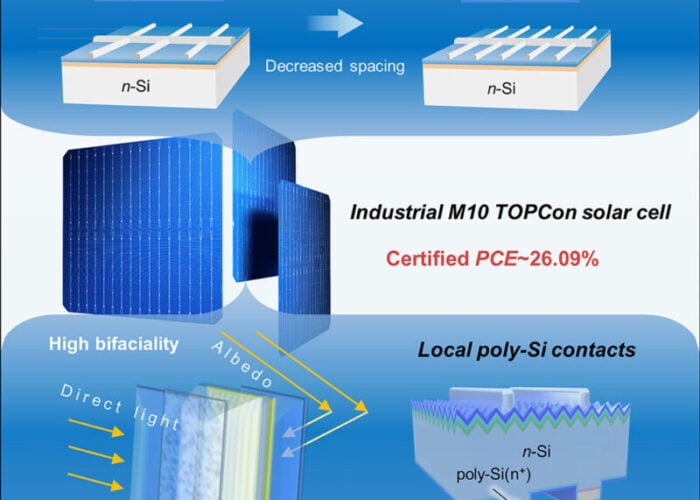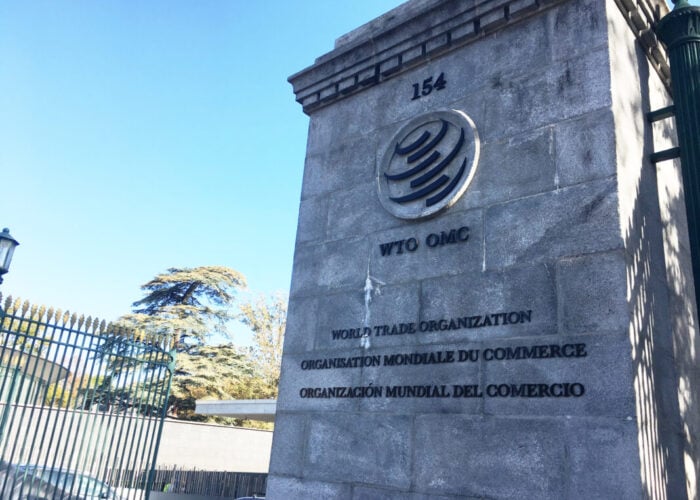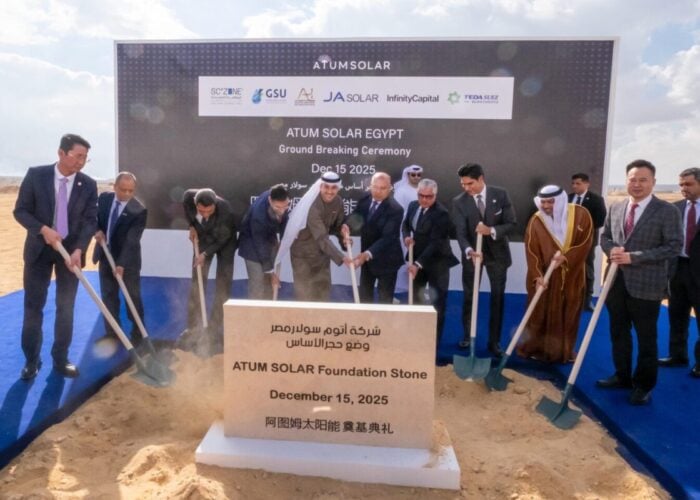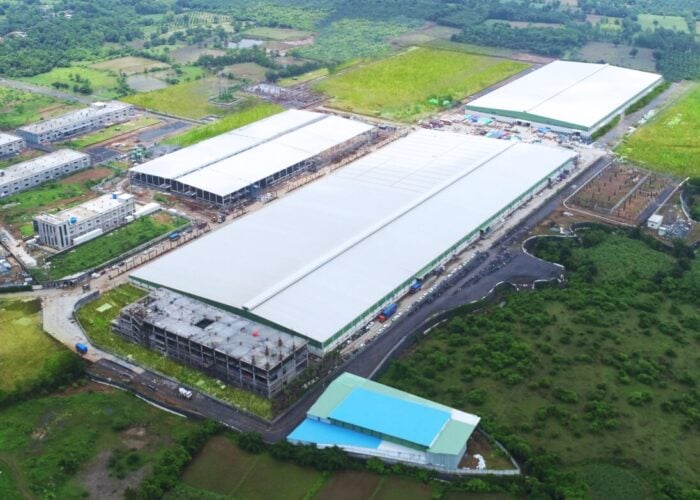
PV Tech is to hold the first ever conference, dedicated specifically to heterojunction (HJT) solar cell technology in manufacturing.
The event will occur over two days, on 11-12 June 2020, in St. Petersburg in Russia.
Try Premium for just $1
- Full premium access for the first month at only $1
- Converts to an annual rate after 30 days unless cancelled
- Cancel anytime during the trial period
Premium Benefits
- Expert industry analysis and interviews
- Digital access to PV Tech Power journal
- Exclusive event discounts
Or get the full Premium subscription right away
Or continue reading this article for free
The new event – called PV HeterojunctionTech 2020 – will combine many of the special features of our PV CellTech and PV ModuleTech events run annually, but will focus purely on heterojunction cell and module capacity levels, productivity, performance levels and ongoing investments.
This article describes why the event is so timely today in the PV industry, what will be covered over the two days in St. Petersburg, and contains links also on how to participate in this exciting new conference in June 2020.
Moving to n-type platforms is the new technology roadmap driver
Over the past decade, we have seen how the PV industry has moved rapidly from p-type multi cell production (and the availability of 250W / 60-cell modules) to p-type mono PERC being the mainstream standard today, and panel powers routinely over 400 Watts using bespoke cell/module designs.
As p-mono PERC has been adopted widespread by almost all c-Si module suppliers, the clear way to differentiate (aside from half-cut cells or new module designs) is to move to the higher performing n-type wafer format. With mono pulling capacity now well over 100 GW, the move from p-type to n-type can now happen properly, with wafer supply guaranteed.
All n-type cell types (PERT, TOPCon-type arrangements, back-contact and heterojunction) share implicit benefits compared to any p-type format, including lower degradation and critically, much-improved elevated-temperature performance.
Indeed, if all things were equal at STC conditions, elevated temperature deltas from n-type substrates would alone justify the transition away from p-type altogether.
Moreover, when looking at the capex and R&D activities of almost all leading p-type module suppliers globally, n-type now features prominently: from pilot-line introduction to multi-GW new capacity expansions.
The move is very real today, and n-type market-shares have the scope to quickly move upwards in the coming years, not just for rooftop applications but large-scale bifacial-based utility projects.
Heterojunction is in pole-position today
While there are many acronyms and variants being marketed today for n-type cell types, we can still segment across three types: a standard version, closely aligned to current p-type PERC cells, sometimes referred to as PERT or a more advanced variant using a passivated contacting method; interdigitated back-contact, or IBC, cells; and heterojunction (or HJT) types.
In terms of efficiency capability, the standard type is at the low end, with IBC at the top. When looking at manufacturing readiness and cost, the pyramid flips here and shows to an extent why some companies have put so much effort into PERT based cells with passivated contacts (not to mention looking at the lowest capex possibly out of China using unproven supply-chains).
Each of the cell types has been shown to be scalable, by early-movers such as SunPower, Sanyo/Panasonic and Yingli Green. The standard n-type format has been further modified from the first lines run by Yingli (the Panda technology) by LG Electronics and Jolywood, to name just two.
Until now, no company has come close to realizing a scalable, low-cost variant of the SunPower IBC lines. As such, IBC remains the niche player in the n-type options outlined above.
The most interesting developments in the last 2-3 years, and indeed when looking at capital investments today into new GW-scale fabs, have come from the heterojunction-based technology.
Of all the n-type variants, it is heterojunction that appears to be the one to watch now, and has the scope to create a massive shift in overall PV technology roadmaps, across cell efficiency, module power and LCOE’s (from both mono-facial and bifacial variants).
Important to differentiate R&D, investment hype, and real mass production
Every time there is a push to introduce performance-enhancing manufacturing variants or process flow changes in the PV industry, there is an understandable degree of hype, and announcements that may never materialize.
Therefore, it is key to understand where the real action is, especially where new state-of-the-art production lines are being run at high utilization rates (>95%), with industry-leading efficiency/power and cost metrics.
R&D into HJT remains a major driver, especially across European research institutes and collaborative funded activities involving some of the most capable PV equipment suppliers in the industry. Other parts of the globe have ongoing efforts, but these tend to be less connected with manufacturing scalability, and appear to be more blue-sky.
The mantle of in-house PV manufacturing R&D leadership has certainly passed in the past few years from Sanyo in Japan, to Hevel in Russia.
From a mass production standpoint, the past few months has seen Hevel now become the leading monthly/quarterly producer of HJT cells globally, as companies in the APAC region have either shuttered old/uncompetitive lines designed 20 years ago for 5-inch wafers, or have only started in the process of installing new-generation HJT lines or building new facilities.
Of course, almost every week during the past couple of years, there have been multi-GWs of JDA’s or MoU’s announced (mainly from Asia) for new HJT facilities. While this is encouraging to read, one should definitely park all this to the side and concentrate on the installation of the first 2-3 mass production lines of any HJT player today.
PV HeterojunctionTech 2020 to explain HJT mass production challenges, opportunities
The timing of the new PV HeterojunctionTech 2020 event in June 2020 is therefore ideal from an industry perspective, just at the point that new-generation HJT equipment and process flows are starting to run in volume production.
One can even say that the PV world is now firmly in Heterojunction 2.0 launch-phase, with Heterojunction 1.0 simply referring to the period when Sanyo (subsequently acquired by Panasonic) showed the HJT was commercially-viable and could be ramped to GW-scale.
Heterojunction 2.0 now fits into the PV technology roadmap perfectly, just as the industry starts to make moves to take the next leap in performance after p-mono PERC.
This frames the motivation for PV HeterojunctionTech 2020. The event, over two days in St. Petersburg, will have an invited-only audience across the key stakeholders today driving Heterojunction 2.0 to multi-GW level production status.
Topics and speakers will address manufacturing challenges and opportunities today, new equipment and materials being used in the new production lines, field data from both rooftop and ground-mounted sites completed in the past 12-18 months, and how R&D today in HJT is central to moving mass production efficiencies to new production highs when running at high utilization and yield rates.
To get in touch with us regarding the PV Heterojunction 2020 event, please contact us using the links on the event website here.






